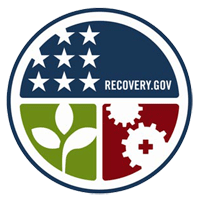 As the expansion of the use of nanomaterials in industry continues, so does the increasing need to study the potential health effects that are associated with exposure. The National Institute of Environmental Health Sciences (NIEHS) is offering a grant under the American Recovery and Reinvestment Act to fund $5 million per year for the development of models to assess the health effects.
As the expansion of the use of nanomaterials in industry continues, so does the increasing need to study the potential health effects that are associated with exposure. The National Institute of Environmental Health Sciences (NIEHS) is offering a grant under the American Recovery and Reinvestment Act to fund $5 million per year for the development of models to assess the health effects.
According to the NIEHS:
The goal of this initiative is to develop reliable and reproducible methods and models to assess exposure, exposure metrics, and biological response to nanomaterials. The coordinated research effort will include diverse routes of exposure to nanomaterials and in vitro and in vivo models of exposure and response. This research is essential for the harmonization of research results, a scientifically sound basis for hazard assessment, and the safe design and development of ENM. This initiative supports the goals identified by the National Nanotechnology Initiative, Strategy for Nanotechnology-related Environment, Health, and Safety Research.
Examples of research that would be responsive to this FOA include, but are not limited to the following:
- Reengineer existing tools or develop new tools to address current limitations in assessing exposure to ENMs in the environment with a high level of temporal resolution
- Adapt or develop methods to measure the exposure in ambient air, drinking water, or skin contact and uptake by inhalational, oral, dermal, or gastric routes
- Adapt or develop methods to understand systemic, biochemical, pathological, immunologic, genotoxic, and mutagenic potential of ENMs based on cellular, biochemical, molecular, and histological methods to characterize pathobiological endpoints from both in vitro and in vivo exposure scenarios
- Establish reproducibility and reliability of test methods or methods developed during this project period using multiple cell culture systems and tissues from multiple laboratory species. The in vitro systems should utilize primary cell cultures and/or co-culture systems and translate these findings to in vivo models
- Study the adaptability of test methods under different exposure conditions, including single and repetitive exposures, with biological assessment at multiple time points in order to improve the predictive power and robustness of the methods
- Develop methods to predict ENMs toxicity in acute versus sub-chronic exposure study designs as permitted within the two-year period
- Develop integrated experimental approach to identify the appropriate dose metric and biological response metric for different classes of ENM for in vitro assays and dose metric, dose rate, and biological response metric for in vivo models
More information can be found on the NIEHS website.
Source: NIEHS
